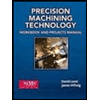43. What effect does Ackerman's principle have on steering operation? a. It allows for caster changes while turning b. It allows the outside tire to turn at a tighter radius than the inside tire c. It allows the inside tire to turn at a tighter radius than the outside tire d. It allows for camber changes while turning 44. Which angle is represented by the tilt of a wheel inward or outward from the vertical as viewed from the front of the car? a. Toe c. Steering axis inclination b. Caster d. Camber 45. What adjustment methods are used on some vehicles to adjust caster and camber? a. Scan tools c. Trammel bar gauge b. Eccentrics and shims d. Optical toe gauge
43. What effect does Ackerman's principle have on steering operation? a. It allows for caster changes while turning b. It allows the outside tire to turn at a tighter radius than the inside tire c. It allows the inside tire to turn at a tighter radius than the outside tire d. It allows for camber changes while turning 44. Which angle is represented by the tilt of a wheel inward or outward from the vertical as viewed from the front of the car? a. Toe c. Steering axis inclination b. Caster d. Camber 45. What adjustment methods are used on some vehicles to adjust caster and camber? a. Scan tools c. Trammel bar gauge b. Eccentrics and shims d. Optical toe gauge
Automotive Technology: A Systems Approach (MindTap Course List)
6th Edition
ISBN:9781133612315
Author:Jack Erjavec, Rob Thompson
Publisher:Jack Erjavec, Rob Thompson
Chapter45: Tires And Wheels
Section: Chapter Questions
Problem 4RQ: Define dynamic and static wheel balance.
Related questions
Question
Hello, I am trying to study for a test and found this practice review but I'd like to be able to check my work. Can someone help answer some of these questions? Thank you

Transcribed Image Text:43. What effect does Ackerman's principle have on steering
operation?
a. It allows for caster changes while turning
b. It allows the outside tire to turn at a tighter radius than
the inside tire
c. It allows the inside tire to turn at a tighter radius than
the outside tire
d. It allows for camber changes while turning
44. Which angle is represented by the tilt of a wheel inward or
outward from the vertical as viewed from the front of the car?
a. Toe
c. Steering axis inclination
b. Caster
d. Camber
45. What adjustment methods are used on some vehicles to adjust
caster and camber?
a. Scan tools
c. Trammel bar gauge
b. Eccentrics and shims
d. Optical toe gauge
46. Which statement best describes toe?
a. Excessive toe-out settings cause the tires to wear on
the outside edges.
b. Toe adjustments affect the centring of the steering
wheel.
c. Toe will not change with vehicle speed.
d. Front-wheel toe is the first adjustment made during a
front-end alignment.
47. Excessive toe-in will cause
a. a sawtooth edge on the tread surface
b. excessive wear on the outer edge of the tire
c. excessive wear on the inside edge of the tire
d. both A and B
48. How must the top of a tire and wheel assembly be moved to
add more positive camber?
a. forward
b. backward
c. inward
d. outward
49. Which angle has the greatest effect on tire wear?
a. caster
b. camber
c. toe
d. SAI

Transcribed Image Text:50. Which of these adjustments is made to compensate for road
crown?
a. Adding slightly more negative caster on the left side
b. Adding slightly more positive caster on the left side
c. Adding slightly more negative toe on the left side
d. Adding slightly more negative caster on the right side
51. Technician A says comparing the SAI, included, and camber
angles can help identify damaged or worn components.
Technician B says if the toe-out-on-turns (turning angle) is
incorrect, the tie-rods, steering arm, or steering knuckle will be
damaged and need to be replaced. Who is correct?
a. A only
b. B only
c. both A and B
d. neither A nor B
52. How would a vehicle handle if it had a negative caster angle?
a. The tires would squeal when turning.
b. Heavy road shock would be felt in the steering.
c. High steering effort
d. Unstable at higher speeds
53. Which of the following statements is false?
a. SAI refers to steering axis inclination.
b. Unequal side-to-side SAI will not cause a pull while
driving.
c. SAI causes the steering system return to the straight-
ahead position after a turn.
d. SAI angles out of specifications indicate damaged or
worn steering or suspension components.
54. When the right front wheel is turned 20 degrees to the left the
left front wheel moves only 18 degrees. What could be the
problem?
a. steering arm
c. excessive setback on the left
side
b. bent pitman arm
d. power steering
pump
Expert Solution
This question has been solved!
Explore an expertly crafted, step-by-step solution for a thorough understanding of key concepts.
Step by step
Solved in 2 steps

Knowledge Booster
Learn more about
Need a deep-dive on the concept behind this application? Look no further. Learn more about this topic, mechanical-engineering and related others by exploring similar questions and additional content below.Recommended textbooks for you

Automotive Technology: A Systems Approach (MindTa…
Mechanical Engineering
ISBN:
9781133612315
Author:
Jack Erjavec, Rob Thompson
Publisher:
Cengage Learning

Precision Machining Technology (MindTap Course Li…
Mechanical Engineering
ISBN:
9781285444543
Author:
Peter J. Hoffman, Eric S. Hopewell, Brian Janes
Publisher:
Cengage Learning

Automotive Technology: A Systems Approach (MindTa…
Mechanical Engineering
ISBN:
9781133612315
Author:
Jack Erjavec, Rob Thompson
Publisher:
Cengage Learning

Precision Machining Technology (MindTap Course Li…
Mechanical Engineering
ISBN:
9781285444543
Author:
Peter J. Hoffman, Eric S. Hopewell, Brian Janes
Publisher:
Cengage Learning